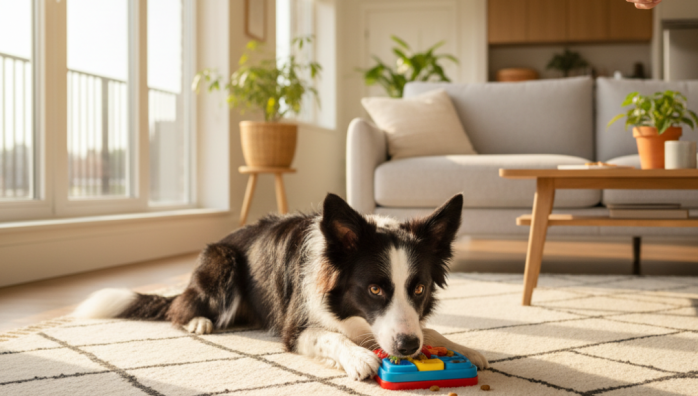Daily Enrichment for Apartment Dogs
by admin in Pet Care Basics 13 - Last Update November 23, 2025

When I first brought my Australian Shepherd mix, Milo, into my city apartment, I\'ll admit I had a moment of pure panic. How was I going to keep this whirlwind of energy happy and fulfilled in under 800 square feet? I quickly learned that just tiring him out on long runs wasn\'t the answer; in fact, it was just creating a super-athlete with endless stamina. The real game-changer was shifting my focus from purely physical exercise to daily mental enrichment.
Why mental stimulation is non-negotiable for apartment dogs
High-energy breeds were developed to do complex jobs—herding, hunting, guarding. Their brains are wired for problem-solving. When that mental energy has no outlet, it can manifest as anxiety, destructive chewing, or constant barking. I realized that 15 minutes of focused brain work tired Milo out more effectively than a 30-minute run. It satisfies a deep-seated canine need to think and work, leading to a calmer, more balanced dog, even in a small space.
My simple daily enrichment routine
You don\'t need expensive gear or tons of space. Over the years, I\'ve refined our routine into a few simple, effective activities that we rotate to keep things interesting.
The breakfast \'hunt\'
Instead of just dumping his breakfast in a bowl, I use it as our first enrichment opportunity. I\'ll either scatter his kibble in a snuffle mat, which mimics foraging, or I\'ll put it in a food-dispensing puzzle toy. This immediately engages his brain and nose, starting his day with a satisfying challenge rather than a 30-second meal.
Mid-day \'work\' session
Around lunchtime, we have a 10-15 minute session dedicated to learning or practicing. Sometimes we work on a new trick, and other times we play scent games. A favorite is the \'find it\' game: I have Milo stay in one room while I hide a few high-value treats in another. Releasing him with the \'find it!\' cue sends him on a mission. It\'s incredible to watch his focus and see how accomplished he is when he finds them.
Decompression with a chew
In the evening, when I\'m winding down, I need Milo to wind down too. This is where a good, long-lasting chew comes in. I\'ve found that a safe, durable chew toy (like a tough rubber one stuffed with a bit of frozen peanut butter) can keep him happily occupied. Chewing is a natural stress-reliever for dogs, and it has been essential for teaching him how to settle calmly. Of course, I always supervise him with any chew, and I recommend you do the same. This is just what works for us, but it\'s always a good idea to chat with your vet about the safest options for your specific dog.
Building a better bond in a small space
Ultimately, incorporating these small acts of enrichment into our day has done more than just prevent boredom. It has deepened our bond immensely. These activities are a form of communication and teamwork. Living with a high-energy dog in an apartment isn\'t a limitation; it\'s an invitation to get creative and engage with your dog on a much deeper level.










